 Petzlover
Petzlover Both Oriental Bicolour and Tiger Cat are originated from United States. Both Oriental Bicolour and Tiger Cat are having almost same weight. Oriental Bicolour may live 5 years less than Tiger Cat. Both Oriental Bicolour and Tiger Cat has same litter size. Oriental Bicolour requires Low Maintenance. But Tiger Cat requires Moderate Maintenance
Both Oriental Bicolour and Tiger Cat are originated from United States. Both Oriental Bicolour and Tiger Cat are having almost same weight. Oriental Bicolour may live 5 years less than Tiger Cat. Both Oriental Bicolour and Tiger Cat has same litter size. Oriental Bicolour requires Low Maintenance. But Tiger Cat requires Moderate Maintenance
 Oriental Bicolour cats owe their origins to Lindajean Grillo of Ciara Cattery. The cats hail from the United States. It was in 1979 that Grillo paired a Siamese and bicolored American Shorthair, selecting the best bicolored offspring to mate again with Siamese or Orientals.
Oriental Bicolour cats owe their origins to Lindajean Grillo of Ciara Cattery. The cats hail from the United States. It was in 1979 that Grillo paired a Siamese and bicolored American Shorthair, selecting the best bicolored offspring to mate again with Siamese or Orientals.
This particular variety was granted recognition in 1983 by TICA. It was during the 1980s that European breeders started their own Oriental bicolor breeding lines. The first modern Oriental Bicolours were imported to the UK during 2004.
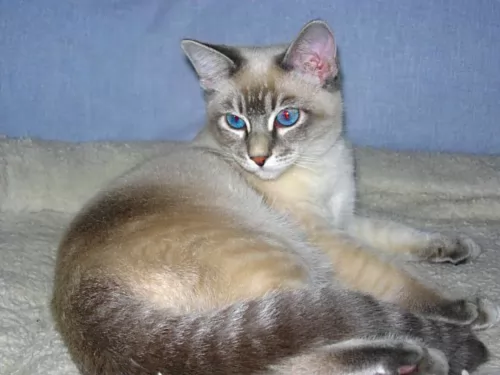 The Tiger cat isn’t actually one breed as such, as it certainly isn’t a combination cat from a mating between a Tiger and a domestic cat as that is just plain impossible.
The Tiger cat isn’t actually one breed as such, as it certainly isn’t a combination cat from a mating between a Tiger and a domestic cat as that is just plain impossible.
Tiger cats are simply certain cat breeds that have patterns that make them look similar to the big, wild Tiger of India.
It is thought that striped tabby cats are Tiger cats. Tabby cats are often called Tiger cats because of their striped fur pattern. These tabby cats aren’t a breed either but rather a cat with a certain pattern.
The Tiger Cat can actually be any of a pure-bred cat breeds you get and this could be American Shorthairs, American Bobtails and Maine Coon cats.
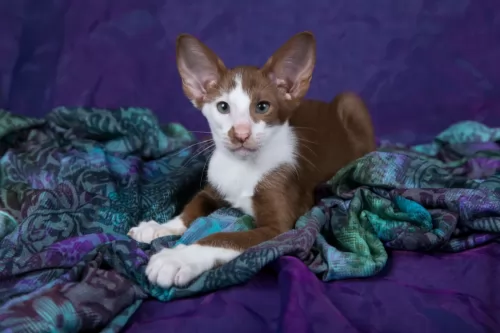 These cats with a triangular-shaped head and slender, long body have a fairly thin tail. The ears are widely set and are large. The eyes are green, but blue with the colorpoint varieties.
These cats with a triangular-shaped head and slender, long body have a fairly thin tail. The ears are widely set and are large. The eyes are green, but blue with the colorpoint varieties.
The coat is short, close-lying and sleek while the coat of the long-haired variety is fine and silky with no thick undercoat. The tail forms a plume. The coat is mostly white and the other part of the coat can be in any other color. You’ll always see quite a bit of white around the legs.
These cats are suited for singles, couples, families, and seniors - in fact, anyone still active enough to provide this cat with lots of attention.
These vibrant cats are known for their social, friendly and loving personality. They are intelligent, inquisitive, active cats that need to have plenty of interaction with their human family members. They love their human family and love to hold conversations with them.
They're entertaining too, and love nothing more to ve the center of attention. They're so into their human family that you may even have him waiting patiently for you to come home fro work. He shouldn't be left alone for hours on end and should rather have a pet friend to keep him company during the day.
 Just some of the cats out there that look like Tiger cats are the Bengal, the Savannah cat, the Toyger, Bombay, and Abyssinian.
Just some of the cats out there that look like Tiger cats are the Bengal, the Savannah cat, the Toyger, Bombay, and Abyssinian.
Some of these cats are larger than the others. The Toyger is the perfect example of these domesticated Tiger-like cats. It’s a cat that is a mix between a Bengal and an ordinary cat from India.
They can be fairly large these cats and weigh anything between 4 and 7kg, possibly more. It looks like a Tiger – the whole purpose of breeding them in the first place.
The coat is short and thick with orange and gold tones and black stripes. They come in in red, brown, or grey shades but the coat is always striped.
Because tiger cats are actually tiger-striped tabbies, they come with the typical Tabby cat personality.
Sometimes they can be aloof and mysterious but most times they are social and friendly. They thrive on the attention they get from their human family,
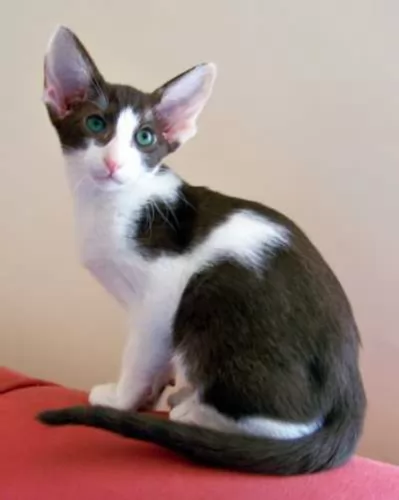 The Oriental Bicolor is such a wonderful pet to have. They are intelligent, entertaining, loving, active, playful, and inquisitive.
The Oriental Bicolor is such a wonderful pet to have. They are intelligent, entertaining, loving, active, playful, and inquisitive.
They’re also athletic and energetic. These cats have got all the characteristics you want in a good friend. They make a fantastic companion to people who are active and happy. They’re also very vocal and have a lot to say to their human family.
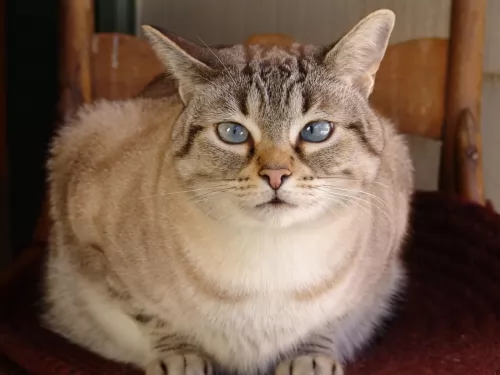 The Tiger cat, just like any other cat, wants to have a good home where he is loved and cared for. Because the Tiger cat is describing a coat and not an actual cat breed, the Tiger cat can come with many different kinds of personalities. He can be lively and vocal or quiet and shy. Many pets turn out with personalities similar to their owners.
The Tiger cat, just like any other cat, wants to have a good home where he is loved and cared for. Because the Tiger cat is describing a coat and not an actual cat breed, the Tiger cat can come with many different kinds of personalities. He can be lively and vocal or quiet and shy. Many pets turn out with personalities similar to their owners.
If you decide to take in a Tiger cat, it is your duty as a responsible pet owner to ensure his wellbeing and happiness.
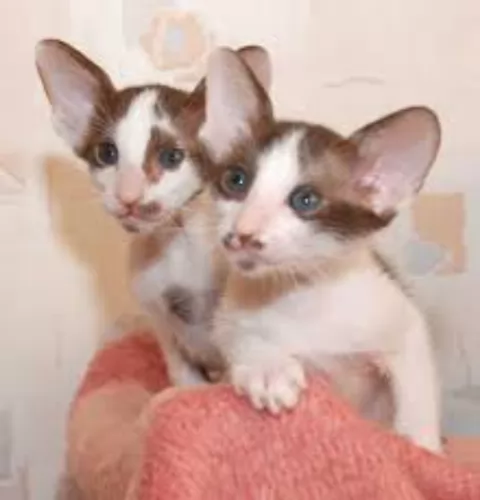 Any cat can develop health problems. Even kittens that come with a certificate of health can develop illnesses that you never thought possible.
Any cat can develop health problems. Even kittens that come with a certificate of health can develop illnesses that you never thought possible.
Orientals are generally healthy cats, but the health issues that may affect the Oriental are similar to that of the Siamese cat.
One of these is Progressive Retinal Atrophy (PRA). This is a genetic eye problem that can lead to blindness. Another disease to look out for is Asthma. The Siamese is susceptible to this disease which means your Oriental Bicolor will also be. You will have to get your furry friend to the vet who may precribe anti-inflammatory drugs.
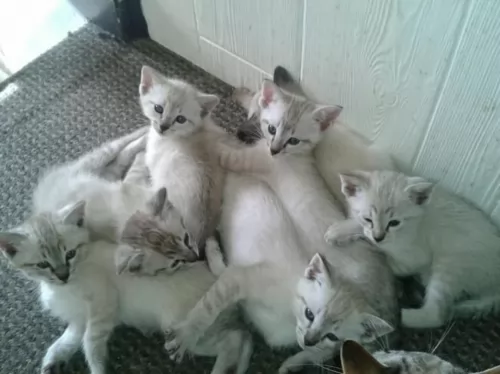 As a pet owner, you have to be able to recognize the signs of an animal that is sick. If your cat persists with his problems, you will need to get him to the vet so that the vet can conduct a careful examination to get to the root of the problem.
As a pet owner, you have to be able to recognize the signs of an animal that is sick. If your cat persists with his problems, you will need to get him to the vet so that the vet can conduct a careful examination to get to the root of the problem.
Did you know there are several cat vaccinations your cat must have to avoid some of the deadly cat diseases there are?
Some of the common cat diseases to look out for are diabetes, hyperthyroidism, bladder infection and eye problems.
 The Oriental Bicolor will require a brushing once a week. A good idea is to also take a warm, damp cloth and to wipe your cat down. It’s an excellent way to rid your cat of loose hairs as well as dust. The cat has a sparse coat, so brush him gently.
The Oriental Bicolor will require a brushing once a week. A good idea is to also take a warm, damp cloth and to wipe your cat down. It’s an excellent way to rid your cat of loose hairs as well as dust. The cat has a sparse coat, so brush him gently.
Other grooming requires nail clipping and checking inside his ears. If you clean his ears, be careful not to go deep into the ear. It is precisely why so many cat owners take their cat to the pet groomers where they can do these things professionally.
It’s very important to keep your Bicolor’s litter box spotlessly clean because like most cats, they won’t use their litterbox if it’s still got yesterday’s feces in it. It needs to be cleaned every day.
The Oriental’s diet is much like that of other cats – it has to be meaty. You can’t afford to not understand your feline pet’s dietary needs. Cats are carnivorous and they need commercial cat food that will be equal to fresh meat that they would normally find in the wild.
They need foods high in protein but they will still need some carbohydrates, amino acids, and vitamins, and minerals. Always go for the best quality pet cat foods because by buying the poorer quality ones you put your cat at risk of developing health problems. Never ever leave your cat without a constant supply of fresh, cool drinking water.
Supply your cat with all the things that make it a pleasure to have a cat. You don’t want to bring your pet home and only then start looking for things to make him at home. He’ll need food and water bowls, a nice warm, soft bed, a litter box, grooming accessories, collar, toys climbing tree and scratching pole.
Have your pet neutered or spayed to prevent unwanted kittens.
Make sure he is taken to the vet when ill. You shouldn't own a pet if you can't afford to pay vet fees. There are some cat illnesses that can make your cat very sick and uncomfortable. He should have his vaccines and also be treated for parasites.
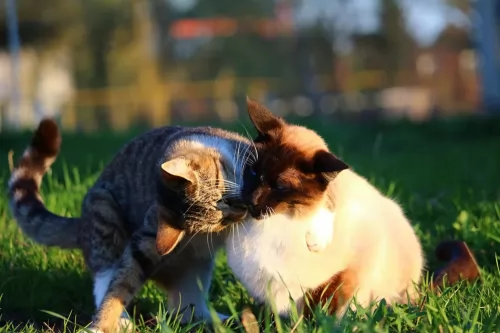 Cats are fairly easy pets to care for and they are able to adapt to different lifestyles and environments too.
Cats are fairly easy pets to care for and they are able to adapt to different lifestyles and environments too.
Before you bring a cat into your home, make sure that you have everything ready to welcome your pet. These are things such as food and water bowls, a soft bed, litter box, toys, a brush, scratching post as well as other cat accessories to make his life comfortable.